
Start your career as a 2D animator for film, TV and games! CG Spectrum’s offers specialized online career training and mentorship from expert animators working at top studios. Get access to career services and a supportive community. Learn more.
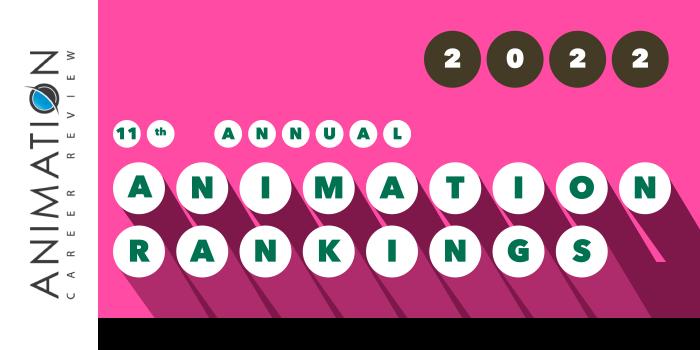
| Ranking | School | City |
|---|---|---|
| 1 | RMIT University | Melbourne |
| 2 | Media Design School | Auckland |
| 3 | Griffith University | Queensland |
| 4 | University of Technology Sydney | Sydney |
| 5 | University of Melbourne | Multiple |
| 6 | Queensland University of Technology | Brisbane |
| 7 | Swinburne University of Technology | Melbourne |
| 8 | Academy of Information Technology | Multiple |
| 9 | The Australian National University | Canberra |
| 10 | Deakin University | Victoria |
For this ranking we only consider formal degree programs (bachelor's degree or equivalent). For an explanation of our ranking criteria, click here.

RMIT University (RMIT) has an Animation Program with both undergraduate and graduate options. The Bachelor of Design in Animation and Interactive Media is a full-time, three-year program that explores 2D and 3D animation, interactive media, and special effects.
Animation and Interactive Media Studio 1-4, Animation and Interactive Media Design for Movement, 2D and 3D Animation, Sound Design for animation, Advanced Visual Effects, and 3D Animation Practice.
Graduates of the RMIT Bachelor of Design in Animation Program work as Animators, 3D Visualizers and Modelers, Digital Artists, Art Directors, Character Designers, Motion Graphic Designers, Pre-Production Artists, and Visual Effects Artists. Some program graduates teach, while others have launched their own studios and freelance businesses.
At the graduate level, RMIT has a Master of Animation, Games, and Interactivity and a six-month Graduate Certificate in Animation, Games, and Interactivity that guarantees entry into the Master Program. The RMIT Master of Animation, Games, and Interactivity can be completed in two years full-time or four years part-time. The program equips students for technical careers in all areas of animation, games, and interactive media.
Program features include access to industry-standard technology and contemporary studios, a collaborative learning and production environment with access to industry professionals, academic staff, and research centers such as the Centre for Games Design Research, and the opportunity to work alongside the creative co-working community ACMI X, and exhibit at Melbourne International Film Festival (MIFF).
Course examples for Master’s Program include Animated Narratives, Animation, Games and Interactivity Studio 1-3, The Illusion of Life, Advanced Play Design, Character, Place and Simulation, Research Methods for Design and Digital Media, and Professional Preproduction. In year two of the program, students will complete the Professional Research Project (Animation, Games and Interactivity) worth 24 credit points, and the Animation, Games and Interactivity Industry Portfolio, worth 12 credit points.
Students in both RMIT Animation Programs have access to industry partnerships with the National Gallery of Victoria (NGV), the Australian Centre for The Moving Image (ACMI), ANZ, and the Australia Post. In addition to MIFF, all students have the opportunity to exhibit at festivals and conferences such as the Melbourne International Animation Festival (MIAF), Annecy, MILIA, Siggraph, and LIAF.
Graduates of the Master of Animation, Games, and Interactivity Program at RMIT University can pursue positions in every area of animation, games and interactivity as well as Research with ACMI X and the RMIT Centre for Games Design Research, which includes the Exertion Games Lab (XGL) and Creative interventions, Art and Rehabilitative Technology (CiART). In addition to Research careers, program alumni can pursue careers in 2D or 3D Animation, Character Design, Interaction Design, App and Web Development, Visual Effects, Games Development, Motion Graphics Design, Pre-Production Art, Web Design, VR and AR, and Interaction Design.
Home to 97,000 students from more than 230 countries, and 9,000 educators and staff, RMIT University was founded in 1887 and established as a university in 1992. With an additional campus in Vietnam, RMIT offers hundreds of programs at all degree levels across 17 schools in several academic colleges. The College of Design and Social Context (DSC), which consists of seven schools, houses the School of Design, home to the RMIT Animation Programs.

Founded in 1998, Media Design School (MDS) was the first tertiary institution in the Southern Hemisphere to offer a dedicated program of study in 3D Animation using industry-standard computer graphics software. Today, the school has a three-year, 3D Animation & VFX Program that leads to a Bachelor of Art and Design.
Course examples include Animation: Workflow and Principles, Animation: Mechanics, Expressions and Gestures, 3D Scripting, Technical Director Modelling II, Visual Effects 3D Compositing, Motion Design Production Techniques, Motion Design Animation, Advanced Rigging, Advanced Creature Animation, Advanced Visual Effects Compositing, Mini Project and team Production I-II.
This project-based program can be completed on campus or online, and students will graduate with several short films and a major production to their credit. Major productions are entered into the international film festival circuit.
Student films have been official selections or won awards at the San Diego Comic-Con International Independent Film Festival, SIGGRAH Asia, SXSW Film Festival, Irvine International Film Fest, South Dakota Film Festival, Annecy Festival, Toronto Shorts Film Festival, Rochester International Film Festival, Palm Springs International Animation Fest, Scandinavian International Film Festival, and many others.
Graduates of the 3D Animation & VFX Program at Media Design School are prepared for careers such as Animator, Compositor, 3D Modeler, VFX Artist, Effects Designer, and Technical Director, among others. MDS 3D Animation & VFX graduates have gone on to secure positions at major studios and work on films such as The Hobbit and Avatar. Program alumni have been recruited by Warner Bros., LucasFilm Singapore, Disney, Microsoft UK, DreamWorks, and Weta Digital New Zealand, among others.

Griffith University (Griffith U) is named after Sir Samuel Walker Griffith, former Queensland Premier and the first Chief Justice of the High Court of Australia, who was the first in the country to introduce degrees in Environmental Science and Modern Asian Studies.
Established in 1975, Griffith U serves around 50,000 students, enrolled in more than 200 degree programs across six campuses in South East Queensland, Australia. Programs at Griffith U are housed in more than 20 schools and departments, including Griffith Film School—the largest school of its kind in Australia.
Also a Toon Boom Center of Excellence, Griffith Film School has an Animation Program that provides the opportunity to collaborate with students in Queensland College of Art and Queensland Conservatorium. Other program features include participation in Experience Week, guest lectures, the opportunity to collaborate on productions with partner institutions such as Beijing Film Academy and Falmouth University, access to exhibitions, Animation masterclasses presented by Gobelins School in Paris and Oscar-winning producer, Lord David Puttnam, and participation in film festivals and exchange study tours.
Leading to a Bachelor of Animation, the Animation Program at Griffith U has four majors: Animating, Art Direction, Technical Direction (CGI), and Streams in Post-Production FX, Script and Stop-Motion Fabrication. Students in all programs have the option to work with 3D puppet or clay animation, experimental media, 2D, 3D, or motion-capture digital animation, or traditional drawn animation. Animation students will have opportunities to work on projects for real clients through LiveLab (Griffith Film School’s commercial production division), and intern with local Animation studios such as Ludo Studio.
Graduates of the Bachelor of Animation Program at Griffith U’s Griffith Film School are prepared to pursue careers in Character Design for 2D and CGI/3D-animated projects, Illustration, Production Management, Visual Effects, Storyboarding, 2D, 3D and Stop-Motion Animation, Compositing, Comics and Graphic Art, Pre-Visualization, Scriptwriting, Matte Painting, and Motion Capture.
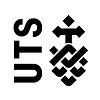
The Faculty of Design, Architecture and Building at University of Technology Sydney (UTS) has an Animation Program with several options including the Bachelor of Design in Animation, Bachelor of Animation Production, and Master of Animation and Visualization. All programs feature hands-on experience, internship opportunities, animation studio courses, and elective options that allow students to develop skills in additional areas in animation.
The Bachelor of Design Program explores 2D and 3D animation, drawing, character development, storytelling, and VFX design. Specific course examples include Animation Studio: Narrative Experimentations, 2D and 3D Context, Advanced Animation Character Rigging, Illustration, Moving Image Design: Animation, and Thinking Through Design. The program culminates with the Animation Studio: Industry Project course.
Graduates of this program are prepared for animation careers in television, film, and multimedia. Animator, VFX Artist, Storyboard Artist, Compositor, Producer, Modeler, Art Director, Character Designer, Concept Artist, Scriptwriter, and Rigger are just a few potential job titles.
The Bachelor of Animation Production at University of Technology Sydney is a three year, full-time program that consists of core courses, communication coursework, and electives.
The UTS Master of Animation and Visualization was developed in partnership with Animal Logic, and it is offered through the UTS Animal Logic Academy. Program highlights include mentoring by industry professionals, learning modeled on real-world production work structures in a custom-built digital studio, and collaborative work practices. Course highlights for the program include The Challenge Studio, The Collaboration Studio, and the Connected Studio.
Career options for graduates of the Animation Programs at UTS include Animator, Animation Scriptwriter, Augmented and Virtual Reality (AR/VR), Character Designer, Compositor, Concept Artist, Director, Editor, Effects (FX) Animator, Matchmover/3D Tracker, Modeler, Previsualization Artist (Previs) Producer, Rigger, Scriptwriter, Storyboard Artist, Rigger, Roto Designer, Stop Frame Model Animator (Claymation), and VFX Artist.

The Faculty of Fine Arts and Music at University of Melbourne (est. 1853) houses the Victorian College of the Arts (VCA), home to the Animation BFA Program. Students in this program will study and work in an intensive, experimental studio-based environment that allows collaboration with peers in programs across Film and Television, Production, Visual Art and Design, and Music and Performing Arts.
Courses for the program explore animation research and techniques, storyboarding, experimentation, world building, sound production, writing, project planning, and character creation. Course examples include Animation Studio, Writing for Animation, Animation Lab, and Collaborative Production. Animation BFA students will have the opportunity to animate, direct, write, and edit short animated film in each year of the program.
The Animation BFA Program at University of Melbourne can be completed in just three years, full-time. Program alumni are prepared for animation careers in the film and television industries, game design, advertising, information, exhibit design, and community arts, among others.

Queensland University of Technology (QUT) has more than 100 programs that are accessible to nearly 50,000 students. Launched in 1989, this public research university consists of two campuses that house five faculties including Business and Law, Creative Industries, Education and Social Justice, Engineering, Science, and Health.
The Faculty of Creative Industries, Education and Social Justice has two options for animators: the Animation BFA and the Bachelor of Games and Interactive Environments (Animation). Both options take three years to complete. The BFA is a studio-based program that explores animated filmmaking, game development, visual arts and visual effects. The Bachelor of Games and Interactive Environments explores the technical and creative aspects of game development and emerging animation techniques. Students in both programs will work on real and practice-based projects.
Graduates of the Animation BFA Program at Queensland University of Technology work in a variety of positions in Animation, Advertising, Film and Television Production, Motion Graphics Design, Computer Game Development and Programming, Web Design, Multimedia Design, Visual Art, Post-Production, among other areas. BFA Program alumni have worked on major productions such as Spider-Man: Far From Home, Guardians of the Galaxy, Avengers: Endgame, I, Robot, Godzilla, and How to Train Your Dragon.
Graduates of the QUT Bachelor of Games and Interactive Environments Program are Animators, Game Programmers, Web Designers, Computer Game Developers, Digital Content Producer, Multimedia Designers, Software Engineers, Computer Systems Engineers, and Sound Designers.
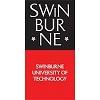
Established more than a century ago, Swinburne University of Technology (Swinburne) serves more than 20,000 students enrolled in a variety of degree and vocational programs in the Arts, Engineering, Design, Technology, Health, Business, Science, and Law. Programs at Swinburn are housed in several faculties, eight schools, and four departments.
The School of Arts, Social Sciences and Humanities is home to the Department of Film and Animation, which offers six animation programs. Options include a Bachelor of Animation (BA-ANI), Bachelor of Games and Interactivity/Bachelor of Animation (BB-GAMIANI), a Diploma of Screen and Media: Animation, an Advanced Diploma of Screen and Media: Animation, a Certificate IV in Screen and Media, and an Advanced Diploma of Creative Product Development.
Students in all programs have access to state-of-the-art production facilities and studios, opportunities to gain work experience through the Swinburne Internship Program, courses that include hands-on training and both individual and collaborative projects, and networking opportunities with studios, businesses, and other organizations.
Across programs, course examples include 2D Production Techniques for Animation, Principles of Game Studies, Writing for Interactive narratives, Advanced Character Design for Animation, Action Analysis and Locomotion, Producing and Production Management for Animation, Dynamics for Games and Animation, Genre and Moving Image, Screenwriting, User-Centered Design & Evaluation, Writing and Directing for Animation, Storyboarding, and Motion Graphics.
The Animation Programs at Swinburne University of Technology culminate with a Final Animation or Games and Interactivity Project and the completion of a professional portfolio. Graduates of all programs are prepared for careers in the animation, games, film and television, and advertising industries, among others.

The Academy of Information Technology (AIT) has trained more than 5,000 students for careers in Digital and Creative Industries since 1999. The school’s Animation Program has Bachelor of Interactive Media (2D Animation) and Diploma of Interactive Media options. Both programs are available at AIT’s Melbourne and Sydney campuses or in a hybrid (on-campus and online) delivery format.
The 2D Animation Program explores storytelling, game design, filmmaking, and animation. Students in the program will also complete projects and coursework using industry-standard software such as Toon Boom Harmony, Adobe Illustrator, Adobe After Effects, Pro Tools, Adobe Animate CC, Adobe Premiere Pro, and Adobe Photoshop.
Course examples across programs include Shooting and Editing, Animation Production, Digital Audio Design, Entertainment and Media, Game Design, Screen language, Decoding Media, Motion Graphics, Advanced 2D Animation, Digital Storytelling, Advanced Creative Drawing, and Digital Pathways. Students will also take courses that are unique to The Academy, such as The Forge, where students develop productions under workplace-like conditions, while being mentored, critiqued, and assessed by industry professionals, and The Launchpad, which helps students prepare for and seek employment.
The Diploma of Interactive Media can be completed in one year, full-time. The Bachelor of Interactive Media can be completed at an accelerated pace in just two years, full-time or at the traditional pace in three years, full-time.
Graduates of the Interactive Media Programs at Academy of Information Technology are prepared for a wide variety of careers in the media, animation, film, game design, and advertising industries. Examples include Visual Effects Artist, Technical Animator, 3D Artist, Illustrator/Cartoonist, Modeler, Art Director, Game Designer or Developer, Character Animator, Interactive Designer, Visual Artist, Product Designer, Interface Designer, Creative Technologist, Concept Artist, Level Designer, UI/UX Designer, Character Designer, Motion Graphics Designer, Creative Director, Mobile App Developer, Multimedia Director, Product Designer, and Motion Graphics Designer.
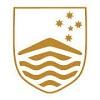
The Australian National University (ANU), established in 1974, consists of seven academic colleges that houses 29 schools, research centers and institutes. The ANU College of Arts & Social Sciences (CASS), home to the Research School of Humanities & the Arts (RSHA). Within the RSHA is the School of Art & Design, which has a Bachelor of Visual Arts (BVART) Program with a Major in Animation and Video.
This 144-unit program provides the opportunity to explore other areas such as photomedia, hybrid art practice, print media, and painting. The Major consists of 48 units, with course titles such as Animation and Video: Animation and Video: Visual Storytelling, Animation and Video: Character Development, Animation and Video: Landscape and Environment, Animation and Video: Digital Equipment and Studios, Animation and Video: The Digital Workspace, Animation and Video: Project Development, and Animation and Video: Non-Linear Forms.
Before beginning the Final Independent Project, ANU Animation and Video students will complete Animation and Video 8: Independent Work Proposal, where they will work with academic staff to develop a screen project or installation.
Graduates of the Animation and Video BVART Program go on to positions in the animation, film, and television industries, they start their own studios or businesses, become practicing visual artists, establish successful careers at galleries and museums, or they go on to become graduate students, teachers, and lecturers.
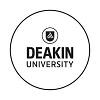
Established in 1974 and serving more than 60,000 students, Deakin University has several programs that provide the opportunity to study Animation. Deakin College at Deakin University has an Animation Diploma Program that offers direct access into Deakin University’s Bachelor of Film, TV & Animation. Diploma students will begin the Bachelor’s Program in the second year. The four-year Bachelor of Film, TV & Animation explores advanced techniques and technologies in filmmaking, television production, and animation.
Program features include internship opportunities, the chance to work on projects with real clients, and access to state-of-the-art equipment in the Deakin TV Studio. Course examples across both pathways include Writing with the Camera, Principles of Animation, The Australian Moving Image, Visual Effects and Motion Graphics, Animation, Performance, and Capture, Character Design for Animation, and The Celebrity Industries: Star Images, Fan Cultures and Performance. Deakin Animation students will complete the Final Animation Project as the culminating experience for the program.
Together, the Deakin University Diploma and Bachelor’s Degree Programs can be competed in four years. The Bachelor of Film, TV & Animation is a three-year program.
Deakin University also has a BDes in 3D Animation recognized by the Design Institute of Australia. The program features courses taught by industry professionals, internships, immersive studios, portfolio development, and projects with local clients. Course examples for the program include Designing 3D Environments, Principles of Animation, Designing 3D Motion, Design Skills and Technologies, Animation, Performance, and Capture, Character Design for Animation, Design to Change the World, Interactive Animation Design Studio, and Motion Graphics for Film and Advertising.
The 3D Animation BDes culminates with the Final Animation Project. Students can expect to complete this program in three years.